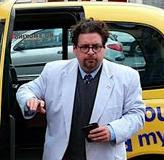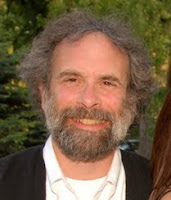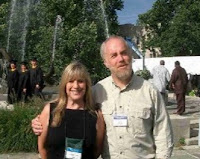An Active Reader Is a Better Writer

By Tobias Ball, Dissertation Editor
I too am guilty of publicly making the promise that after I complete this or that degree, I am finally going to sit down and do some personal reading. The transgression of denying one's self the pleasure of a good novel or a couple of hours browsing the articles in a favorite magazine or reading aloud some poetry to the dog is one that many students feel is necessary. This is not true. The more one reads the better writer he or she will likely become.
Reading, even something that is not from a peer-reviewed, scholarly journal, can be a reminder of what good writing looks and sounds like. An active reader is one who will also become intimate with the process of writing and be able to recognize when something is good, regardless of the topic or venue. Although fiction writers are considering a different audience, just like academic writers, they want to maintain their readers’ attention and convey a particular message.
Active readers serve as an audience and thereby become aware of the needs of an audience. This awareness makes them better writers. People writing in diaries write for themselves. When composing something as intimate as a letter, writers are acutely aware of their singular audience. Bloggers can track the reading patterns and waxing and waning interests of their audience. Academic writers too know their audience. At first, it is a committee, then the longer list of university approvers, and finally the academic community and future researchers. If meticulous writers are also meticulous readers, they will have an improved awareness and concern for their audience.
Active readers know what has already been written, what was written well, and what requires additional attention. One edition of the APA Publication Manual has a section on the repository that is the scientific journal. This section includes the caveat that a familiarity with the literature allows not only for insight and an ability to avoid repetition, but also an opportunity to contribute something new. The same joy that is felt when a reader discovers a new writer or a new piece by an already favorite writer can be felt by a reader who also contributes something new to the body of academic literature.
Reading can be a source of inspiration, even when reading something that has not been assigned in a class, something that was not retrieved from a library database, or something that is outside of the prescribed social science reading list. A fiction writer may use an old word in a new way or imagine some bit of science fiction that later becomes a tool in the classroom. The ability of someone to capture a feeling in prose or perfectly describe a feeling on the page is proof that words can captivate and motivate. There is no reason to believe that an academic paper cannot be a page turner in the same way as a mystery novel.
Too many things are already sacrificed in the name of school. Time becomes a premium. Leisure is lost. Vacations are postponed. Money is spent. The pleasure of reading has no place on that list. Pick up a book. Buy one or go to the library. Before sitting down to compose a single word of a single draft, read a page or two of fiction. Look at the girth of a hefty novel and know that this writer too, just like the academic writer, conducted research, wrote multiple drafts, shed tears when an editor shredded it, bounced back to create an even better draft, and one day finished the work.
One! One Blog Post!

By Jessica Barron, Writing Consultant
I never much cared for The Count on Sesame Street. He was not as furry as Snuffleupagus, and his dark lair was a bit frightening for me to comfortably learn numbers. I chose a career path that would lead me into words and writing, and never did I think that the lessons of The Count would be needed in that field. That was, of course, until I learned of count and noncount nouns.
The quick definition of a count noun is a word that can be divided into or counted in units, like one apple or seven puppies. These nouns have both singular and plural forms, and these two forms make it relatively easy for a writer to spot any noun/pronoun agreement or subject/verb agreement issues. However, where a writer can easily change a plural pronoun to a singular one to align with a subject, it can be more difficult to spot any noncount nouns that are used improperly.
Noncount nouns are not categorized as singular or plural; instead, they exist in the singular form. An example of a noncount noun that Walden students often use is evidence. Rather than make this subject plural, like The Count yelling “Two! Two evidences!” during his segment, the writer would refer to the singular form or precede the term with a unit of measurement:
Jones collected evidence that was based on previous research.
Smith found two pieces of evidence to use in the study.
Other noncount nouns that you might encounter during scholarship are fields of study, like education, or groups of similar items, like faculty. Review our Grammar page for more examples of noncount nouns and how to use them in context.
Also, if you’re wondering how another Sesame Street character, Cookie Monster, relates to grammar rules, see this previous grammar post.
Getting Lost

By Hillary Wentworth, Writing Consultant
My husband and I recently traveled to Venice, Italy, for vacation. Let me tell you some things about Venice: there are no roads, only canals; there are no straight walking paths, only long windy ones with bridges and dead ends. Our first night there, we wanted to go to one specific restaurant that was in our guidebook. We had an address but not much else. Well, an address won’t get you too far. We searched and searched for the restaurant and ended up lost, in a completely different part of town. However, it was the Venice we were looking for: free of tourist crowds and just normal people going about their daily lives. A little boy kicking a soccer ball around an empty church square. An older woman out for an evening stroll with a neighbor, her hand relaxed on the neighbor’s wrist. A small, sleepy canal too narrow for a gondolier to sneak through. We took a moment and forgot about the restaurant, basking in the state of being lost.
In student writing, I often notice that the first half of a paper is about one thing, while the rest is about another. The student is in effect “getting lost” by exploring material unrelated to his/her introduction or thesis. Getting lost is not something to be afraid of; rather, it is something to be embraced. In this discovery is where the real heart of your learning resides. Obviously, you cannot leave your paper as two vastly different ideas. You need to choose one. My advice is to go with the second one. When I see these papers, I see writers who are finding their groove and determining what they really want to write about, and what is important to them. Therefore, if this happens to you, you might decide to revisit the main topic of the paper with the second half in mind. You might even throw out the first half. In that way, the initial writing is just a vehicle to another, more robust and deeper idea.
Sometimes, though, you can’t even tell that you are lost. Or if you do know that you are lost, you are still afraid to ask for directions. To determine whether you are lost and where you should be going, draw a map of your paper. Read through the paper from beginning to end, marking the main idea of each paragraph in the margin. After you finish, look back over what you’ve sketched there. Is there a certain point where you veer off into different territory? Does the end of your paper seem to “match” the beginning? In other words, did you achieve what you proposed in the introduction? If the paper does seem disconnected, consider starting fresh at the fork in the road, the spot where you veered. You can also try to make the current paper work by deconstructing the paragraphs and then rearranging them. This is a fun scissors activity; just cut up the paragraphs and shuffle them around on your desk.
The real aim, though, is to be comfortable with the writing process. It’s going to be messy; you’re going to get lost and desperate. However, with the right tools—the right mentality and the right process—you will always be able to find your way home.
A Lesson in Time Management --Oh Yeah, and Paraphrasing

By Jeff Zuckerman, Dissertation Specialist
Contributing writers (that would be me) should check the schedule of deadlines so that they do not find out while on vacation they have 2 days to submit a blog post.
Speaking of which: If you’ve taken A Practical Course in APA Style, you know why I used the numeral 2 in that sentence instead of the word two. (Hint: See APA 4.31.)
But would you know how to directly quote or paraphrase that first sentence following all APA style guidelines? In fact, one of the hardest tasks for many of my students in Center for Student Success courses I’ve taught has been quoting a source and paraphrasing in correct APA style. Yet it’s one of the most important skills students need to master.
Here are some basic guidelines:
1. You can’t just copy a phrase from a source without using quotation marks to show it’s a direct quote. That would be plagiarism.
2. When you are directly quoting, you are required to use quotation marks and show the page number or paragraph number from the original source.
3. The APA manual (2010) “encourages” authors to include a page reference when paraphrasing (p. 171).
4. The page number goes inside parentheses (the abbreviation p. or para. followed by a space and then the page number).
5. When you cite an author, all you need is his or her last name followed by the year.
So how would you quote the first sentence in this piece? Here are two ways:
a. Zuckerman (2011) realized that contributors “should check the schedule of deadlines so that they do not find out while on vacation they have 2 days to submit a blog post” (para. 1).
b. Contributors “should check the schedule of deadlines so that they do not find out while on vacation they have 2 days to submit a blog post” (Zuckerman, 2011, para. 1).
As your instructors have probably told you, your writing should be more than a series of direct quotes. Instead, you should try to paraphrase—that is, you should take what you’ve read and put it in your own words. And “your own words” truly means your own words, your own voice, and your own interpretation.
So how would you paraphrase that first sentence?
a. Zuckerman (2011) suggested he should have planned ahead and noticed the due date for his next blog contribution (para. 1).
b. Authors ought to pay attention to their deadlines so they do not spend their vacation in Boulder, Colorado, whipping together a post at the last minute (Zuckerman, 2011, para. 1).
As you progress in your studies, keep these time management tips--and citation rules!--in mind.
Special Guest Blog: An Excerpt From Recipes for Success

By Dr. Marilyn K. Simon, with an introduction by Dr. Jim Goes
Faculty member Dr. Marilyn K. Simon outlines a step-by-step plan to help you successfully write your doctoral program dissertation or a full-length book in the third edition of Recipes for Success.
“The research-based dissertation is the hallmark of most doctoral programs and sets doctoral-level study apart from other levels of learning,” explains Walden faculty member Dr. Jim Goes in the introduction to the third edition of Dr. Marilyn Simon’s Recipes for Success (2011). “Dissertation writing is a profound act of original scholarship, involving deep original thought, critical thinking, and creation of new knowledge. Dr. Simon has crafted a process by which anyone can build the pieces of a successful dissertation.”
Recipes for Success is presented in three parts: preparing the menu for your feast; gathering the utensils to collect and analyze data to help you solve the problem you pose; and finally, learning how to put your meal together to ensure a delicious high-quality study to serve at your feast. Here, we’ve excerpted a taste of the book, which teaches you how to knead the critical ingredients together:
APPETIZER
The purpose of an introduction is to capture the attention of the reader or set the stage for the courses to follow. It will acquaint the reader with the problem you are studying, the approach that you have chosen to study the problem, and your style of writing. It is the place where you begin to dish out your ideas and whet the appetite of your readers. An introduction gives the reader a peek at your study. It usually:
1. Puts your study in some perspective.
2. Establishes the need for your study.
3. Alerts the reader to what will follow.
4. Catches the attention and interest of the reader.
SOUP/SALAD
A literature review is an integrated critical essay that analyzes and synthesizes the most relevant and current published knowledge on the topic under investigation. The review is organized around major ideas and themes. You need to review critically other studies that have tried to answer the questions that you are asking and solve problems similar to the one you framed. You need to summarize these studies, compare them, contrast them, organize them, comment on their validity, and stir similar ones together.
A substantive, thorough, and scholarly literature review is a prerequisite for doing substantive, thorough, and scholarly research. To be useful, scholarly research must be cumulative; it must build on and learn from prior research on the same or related problem under investigation. It must also clarify and resolve inconsistencies and tensions in the literature and thereby make a genuine contribution to the state of knowledge in the field (Boote & Beile, 2005).
MAIN COURSE: PART ONE
You are ready to put together many of the ingredients that you have carefully amassed and create a splendid main course. In chapter three, you will spoon-feed your guests as you elaborate, in great detail, the research design that you selected and how it applies to your study.
Chapter three is where you elaborate on why the paradigm and method you chose are appropriate to solve the problem you posed. If a qualitative design was chosen, an argument about how a quantitative method would not solve the problem should be included, with sources. Make certain to use a germinal book on the method to help justify your selection. Also let your work marinate so all parts come together and tenderize as needed to make your feast palatable to your guests.
MAIN COURSE: PART TWO
Here is where you provide the punch line, or tell the reader what you discovered from your study. Chapter four presents, in sufficient detail, the research findings and data analyses and describes the systematic and careful application of the research methods.
There is no single way to analyze the data; therefore, the organization of this chapter and analysis procedures will relate to the research design and research methods you selected. However, there are general guidelines to follow and components to include. The presentation and analysis chapter of your dissertation usually contains many of the garnishes listed below and provides an affriander (addition to a dish to give it a more appetizing appearance).
DESSERT
Kudos, cheers, and compliments to the chef. It is now time to relax and savor the final moments of your eloquent banquet. Here is the time where you can editorialize about you study and advise future cooks on how to create similar feasts.
Chapter five discusses the findings and expounds on their importance, meaning, and significance. Confirming and contradicting data are thoroughly discussed. Here is your chance to unravel the power and importance of your research.
-----
Dr. Marilyn K. Simon has been actively involved in mathematics and computer education since 1969. She has been part of the Walden community, first as a student and then as a faculty member, for 22 years. She has published numerous books on mathematics education, scholarly research, high stakes test-preparation, and online learning. She is also the president of MathPower, co-founder of Best-Prep, educational consulting firm, and president of the board of directors of Responsibility, a non-profit charity that builds schools for families that live at the Tijuana municipal dump. Dr. Simon joins forces with her esteemed Walden colleague Dr. Jim Goes to provide an open source web page to assist doctoral students and doctoral mentors. The two helped establish many of the social change initiatives that Walden has enacted.
Shortcuts: Functionality at Your Fingertips

By Jessica Barron, Writing Consultant
Using the functions of Microsoft Word makes me happy. Finding the location of these functions, however, does not. Sometimes it just seems easier to manually double space a paper instead of taking the time to search through drop down menus for the line spacing selection. Thankfully, Microsoft has an extensive list of shortcut codes that puts functionality at your fingertips, literally! Check out http://support.microsoft.com/kb/290938 for a complete list, but here are some of my favorites:
CTRL+S – Save a document
I use this shortcut the most, usually after every edit I make to a document. I have had more than one computer crash on me mid-sentence, so learning this shortcut would be beneficial to all writers who want to frequently save their work.
CTRL+Z – Undo the last action
I tend to click on things a lot, even if I don’t know what they do. The shortcut to “undo” helps me reverse something immediately before I click on something else and my actions become irreversible.
CTRL+C – Copy selected text or object
CTRL+X – Cut selected text or object
CTRL+V – Paste cut/copied text or object
These are classic shortcuts, but they are still useful in modern word processing. When revising a document, I often cut and paste sentences from one paragraph into a different one to see how that placement impacts my overall flow and organization.
CTRL+A – Highlight the entire document
This function highlights all of the items in a paper. While it may not be used often, if a global edit needs to be made (e.g., changing the line spacing or font style), this shortcut helps writers avoid dragging their mouse through a whole document in order to highlight their text.
CTRL+2 – Double space a document
Not sure what Word can do for you? This shortcut is fantastic for those new to the functionalities of Word. Because all course papers should be double spaced, this action helps those who may not be tech savvy format their papers per Walden and APA guidelines. No more manual spacing required! And yes, you guessed it—CTRL+1 easily changes double-spaced text to single-spaced text.
CTRL+ENTER – Insert a page break
This shortcut is especially useful for writers who have gotten into the habit of manually entering spaces to start a new page in a document, like for a reference list. Using Word’s page break functionality helps you avoid having to reformat the placement of that new page if you add or delete anything during the revision process.
CTRL+EQUAL SIGN – Create subscript text
CTRL+SHIFT+EQUAL SIGN – Create superscript text
Ever wonder how writers make text incredibly small and off-center, like in H01 or 21st century? These two shortcuts will help you avoid having to search for font options to create these subscript and superscript styles.
CTRL+T – Create a hanging indent
The term hanging indent often appears in discussions of reference list formatting, but finding a document’s ruler is often more time consuming than just using the Tab key to indent lines of a reference citation. However, this shortcut quickly creates a hanging indent, which will help ensure that your reference citations are APA compliant!
There are many more shortcut options available to Word users, so if you often use one that isn’t on this list, let us and your peers know!
Subscribe to:
Comments
(
Atom
)



1 comment :
Post a Comment